Research on Equalization Strategy of Lithium Battery Pack Based on Multi-Layer Circuit
Abstract
:1. Introduction
- (1)
- The proposed equalization strategy considers the equalization of the battery in the group from a broad perspective, takes all equalization speed and current constraints into account, and optimizes the equalization current. The strategy can not only ensure the equalization speed of the battery in the group but also that the battery charge and discharge current are within the allowable range and improve the safety of the equalization process;
- (2)
- A layered battery equalization method is proposed, which reduces the calculation difficulty of the equalization current by layered equalization of the batteries in the group and calculates the equalization current in real-time according to the state of the batteries in the group. The method makes the proposed equalization strategy easier to implement and more suitable for large-scale applications.
2. Related Work
3. Multi-Layer Equilibrium System Model
3.1. Equalizing Currents
3.2. Battery Pack Equalization Model
3.3. Cell Balancing Constraints
4. Multi-Layer Balancing Strategy
4.1. Cell Balancing Task Formulation
4.2. Equilibrium Strategy Analysis
5. Simulation Results
5.1. Battery Pack Equalization Results
- (1)
- Firstly, collect the SOC and current values of the batteries in the group, calculate the average values of batteries 1–4 and 5–8, determine the size and direction of the equilibrium current;
- (2)
- The objective function of equalization current can be obtained from Equation (15), and the best equalization current of the first layer can be obtained by PSO;
- (3)
- Calculate the average SOC of batteries 1–2, 3–4, 5–6, and 7–8, determine the size and flow direction of the equalization current, and bring into Equation (14). The objective function is calculated from Equation (15); calculate the best equalization current of the second layer through PSO;
- (4)
- Collect the SOC value of batteries 1–8, determine the size and flow direction of equalization current, bring into Equation (14), calculate the objective function from Equation (15), and calculate the best equalization current of the third layer through PSO;
- (5)
- Repeat the above four steps until the battery pack is balanced.
5.2. Comparison with Adjacent Equilibrium
5.3. Comparison of Fuzzy Control Method with Adjacent Equalization Circuit
5.4. Comparison with the Control Method Based on SOC Difference
5.5. Different Initial SOC Equalization Test
- Case 1: SOC(0) = [66, 48, 64, 54, 67, 74, 61, 47];
- Case 2: SOC(0) = [53, 28, 25, 55, 32, 41, 37, 48];
- Case 3: SOC(0) = [25, 29, 32, 36, 42, 47, 52, 55];
- Case 4: SOC(0) = [27, 40, 47, 25, 36, 52, 55, 32].
5.6. Overall Analysis
6. Conclusions
Author Contributions
Funding
Institutional Review Board Statement
Informed Consent Statement
Data Availability Statement
Conflicts of Interest
References
- El-Batawy, S.A.; Morsi, W.G. Optimal Design of Community Battery Energy Storage Systems With Prosumers Owning Electric Vehicles. IEEE Trans. Ind. Inform. 2018, 14, 1920–1931. [Google Scholar] [CrossRef]
- Zhang, Q.; Deng, W.; Li, G. Stochastic control of predictive power management for battery/supercapacitor hybrid energy storage systems of electric vehicles. IEEE Trans. Ind. Inform. 2017, 14, 3023–3030. [Google Scholar] [CrossRef]
- Wang, H.; Huang, Y.J.; Khajepour, A. Cyber-Physical Control for Energy Management of Off-Road Vehicles With Hybrid Energy Storage Systems. IEEE-ASME Trans. Mechatron. 2018, 23, 2609–2618. [Google Scholar] [CrossRef]
- Zhang, Y.Z.; Xiong, R.; He, H.W.; Pecht, M. Validation and verification of a hybrid method for remaining useful life prediction of lithium-ion batteries. J. Clean. Prod. 2019, 212, 240–249. [Google Scholar] [CrossRef]
- Zheng, L.F.; Zhu, J.G.; Wang, G.X.; Lu, D.D.C.; He, T.T. Lithium-ion Battery Instantaneous Available Power Prediction Using Surface Lithium Concentration of Solid Particles in a Simplified Electrochemical Model. IEEE Trans. Power Electron. 2018, 33, 9551–9560. [Google Scholar] [CrossRef]
- Yuan, M.X.; Chen, Z.; Yao, B.; Liu, X.Y. Fast and Accurate Motion Tracking of a Linear Motor System Under Kinematic and Dynamic Constraints: An Integrated Planning and Control Approach. IEEE Trans. Control Syst. Technol. 2021, 29, 804–811. [Google Scholar] [CrossRef]
- Yuan, M.X.; Chen, Z.; Yao, B.; Hu, J.F. A General Online Trajectory Planning Framework in the Case of Desired Function Unknown in Advance. IEEE Trans. Ind. Inform. 2019, 15, 2753–2762. [Google Scholar] [CrossRef]
- Xu, B.L.; Oudalov, A.; Ulbig, A.; Andersson, G.; Kirschen, D.S. Modeling of Lithium-Ion Battery Degradation for Cell Life Assessment. IEEE Trans. Smart Grid 2018, 9, 1131–1140. [Google Scholar] [CrossRef]
- Yang, J.F.; Xia, B.; Huang, W.X.; Fu, Y.H.; Mi, C. Online state-of-health estimation for lithium-ion batteries using constant-voltage charging current analysis. Appl. Energy 2018, 212, 1589–1600. [Google Scholar] [CrossRef]
- Wang, D.; Yang, F.F.; Tsui, K.L.; Zhou, Q.; Bae, S.J. Remaining Useful Life Prediction of Lithium-Ion Batteries Based on Spherical Cubature Particle Filter. IEEE Trans. Instrum. Meas. 2016, 65, 1282–1291. [Google Scholar] [CrossRef]
- Abdullah-Al, M.; Liu, Z.F.; Rizzo, D.M.; Onori, S. An Integrated Design and Control Optimization Framework for Hybrid Military Vehicle Using Lithium-Ion Battery and Supercapacitor as Energy Storage Devices. IEEE Trans. Transp. Electrif. 2019, 5, 239–251. [Google Scholar]
- Ouyang, Q.; Chen, J.; Zheng, J.; Fang, H.Z. Optimal Multiobjective Charging for Lithium-Ion Battery Packs: A Hierarchical Control Approach. IEEE Trans. Ind. Inform. 2018, 14, 4243–4253. [Google Scholar] [CrossRef]
- Ouyang, D.X.; Liu, J.H.; Chen, M.Y.; Wang, J. Investigation into the Fire Hazards of Lithium-Ion Batteries under Overcharging. Appl. Sci. 2017, 7, 1314. [Google Scholar] [CrossRef] [Green Version]
- Hoekstra, F.S.J.; Bergveld, H.J.; Donkers, M.C.F. Optimal Control of Active Cell Balancing: Extending the Range and Useful Lifetime of a Battery Pack. In IEEE Transactions on Control Systems Technology; IEEE: Piscataway, NJ, USA, 2022. [Google Scholar]
- Zhang, S.Z.; Peng, N.; Lu, H.B.; Li, R.; Zhang, X.W. A systematic and low-complexity multi-state estimation framework for series-connected lithium-ion battery pack under passive balance control. J. Energy Storage 2022, 48, 104321. [Google Scholar] [CrossRef]
- Tang, X.P.; Gao, F.R.; Liu, K.L.; Liu, Q.; Foley, A.M. A Balancing Current Ratio Based State-of-Health Estimation Solution for Lithium-Ion Battery Pack. IEEE Trans. Ind. Electron. 2022, 69, 8055–8065. [Google Scholar] [CrossRef]
- Xu, J.; Mei, X.S.; Wang, H.T.; Shi, H.; Sun, Z.; Zou, Z.Y. A model based balancing system for battery energy storage systems. J. Energy Storage 2022, 49, 104114. [Google Scholar] [CrossRef]
- Wu, S.T.; Chang, Y.N.; Chang, C.Y.; Cheng, Y.T. A Fast Charging Balancing Circuit for LiFePO4 Battery. Electronics 2019, 8, 1144. [Google Scholar] [CrossRef] [Green Version]
- Pham, V.L.; Duong, V.T.; Choi, W. A Low Cost and Fast Cell-to-Cell Balancing Circuit for Lithium-Ion Battery Strings. Electronics 2020, 9, 248. [Google Scholar] [CrossRef] [Green Version]
- Feizi, M.; Beiranvand, R. A high-power high-frequency self-balanced battery charger for lithium-ion batteries energy storage systems. J. Energy Storage 2021, 41, 102886. [Google Scholar] [CrossRef]
- Moghaddam, A.F.; Van den Bossche, A. An Efficient Equalizing Method for Lithium-Ion Batteries Based on Coupled Inductor Balancing. Electronics 2019, 8, 136. [Google Scholar] [CrossRef] [Green Version]
- Chen, F.; Yuan, J.; Zheng, C.; Wang, C.; Li, Z.; Zhou, X. A State-of-Charge Based Active EV Battery Balancing Method. In Proceedings of the 2018 2nd International Conference on Electrical Engineering and Automation (ICEEA 2018), Chengdu, China, 25–26 March 2018. [Google Scholar]
- Cao, J.W.; Xia, B.Z.; Zhou, J. An Active Equalization Method for Lithium-ion Batteries Based on Flyback Transformer and Variable Step Size Generalized Predictive Control. Energies 2021, 14, 207. [Google Scholar] [CrossRef]
- Moghaddam, A.F.; Van den Bossche, A. A Cuk Converter Cell Balancing Technique by Using Coupled Inductors for Lithium-Based Batteries. Energies 2019, 12, 2881. [Google Scholar] [CrossRef] [Green Version]
- Shang, Y.L.; Xia, B.; Lu, F.; Zhang, C.H.; Cui, N.X.; Mi, C.T.C. A Switched-Coupling-Capacitor Equalizer for Series-Connected Battery Strings. IEEE Trans. Power Electron. 2017, 32, 7694–7706. [Google Scholar] [CrossRef]
- Ye, Y.M.; Cheng, K.W.E.; Fong, Y.C.; Xue, X.D.; Lin, J. Topology, Modeling, and Design of Switched-Capacitor-Based Cell Balancing Systems and Their Balancing Exploration. IEEE Trans. Power Electron. 2017, 32, 4444–4454. [Google Scholar] [CrossRef]
- Shang, Y.L.; Zhang, Q.; Cui, N.X.; Duan, B.; Zhang, C.H. A Optimized Mesh-Structured Switched-Capacitor Equalizer for Lithium-Ion Battery Strings. IEEE Trans. Transp. Electrif. 2019, 5, 252–261. [Google Scholar] [CrossRef]
- Zhang, Y.L.; Hong, Y.; Choi, K. Optimal energy-dissipation control for SOC based balancing in series connected Lithium-ion battery packs. Multimed. Tools Appl. 2020, 79, 15923–15944. [Google Scholar] [CrossRef]
- Wu, X.G.; Cui, Z.H.; Li, X.F.; Du, J.Y.; Liu, Y. Control Strategy for Active Hierarchical Equalization Circuits of Series Battery Packs. Energies 2019, 12, 2071. [Google Scholar] [CrossRef] [Green Version]
- Chen, Y.; Shen, T.; Yang, S.Y.; Liu, X.F.; Yang, R.; Cheng, L.F. A Path Planning Strategy with Ant Colony Algorithm for Series Connected Batteries. Electronics 2020, 9, 1816. [Google Scholar] [CrossRef]
- Zhang, Z.Y.; Zhang, L.Z.; Hu, L.; Huang, C.X. Active cell balancing of lithium-ion battery pack based on average state of charge. Int. J. Energy Res. 2020, 44, 2535–2548. [Google Scholar] [CrossRef]
- Lv, J.; Song, W.J.; Lin, S.L.; Chen, M.B.; Feng, Z.P.; Li, Y.L.; Ding, Y.L. Influence of equalization on LiFePO4 battery inconsistency. Int. J. Energy Res. 2017, 41, 1171–1181. [Google Scholar] [CrossRef]
- Sun, W.B.; Li, Y.L.; Liu, L.Z.; Mai, R.K. A switched-capacitor battery equalization method for improving balancing speed. IET Electr. Power Appl. 2021, 15, 555–569. [Google Scholar] [CrossRef]
- Wang, Y.X.; Zhong, H.; Li, J.W.; Zhang, W. Adaptive estimation-based hierarchical model predictive control methodology for battery active equalization topologies: Part I-Balancing strategy. J. Energy Storage 2022, 45, 103235. [Google Scholar] [CrossRef]
- Liao, L.; Chen, H. Research on two-stage equalization strategy based on fuzzy logic control for lithium-ion battery packs. J. Energy Storage 2022, 50, 104321. [Google Scholar] [CrossRef]
- Zhang, L.C. Research on a balanced circuit and control strategy. Int. J. Low-Carbon Technol. 2020, 15, 607–612. [Google Scholar] [CrossRef]
- Zheng, L.; Zhu, J.; Wang, G.; Lu, D.D.-C.; McLean, P.; He, T. Model predictive control based balancing strategy for series-connected lithium-ion battery packs. In Proceedings of the 2017 19th European Conference on Power Electronics and Applications (EPE’17 ECCE Europe), Warsaw, Poland, 11–14 September 2017. [Google Scholar]
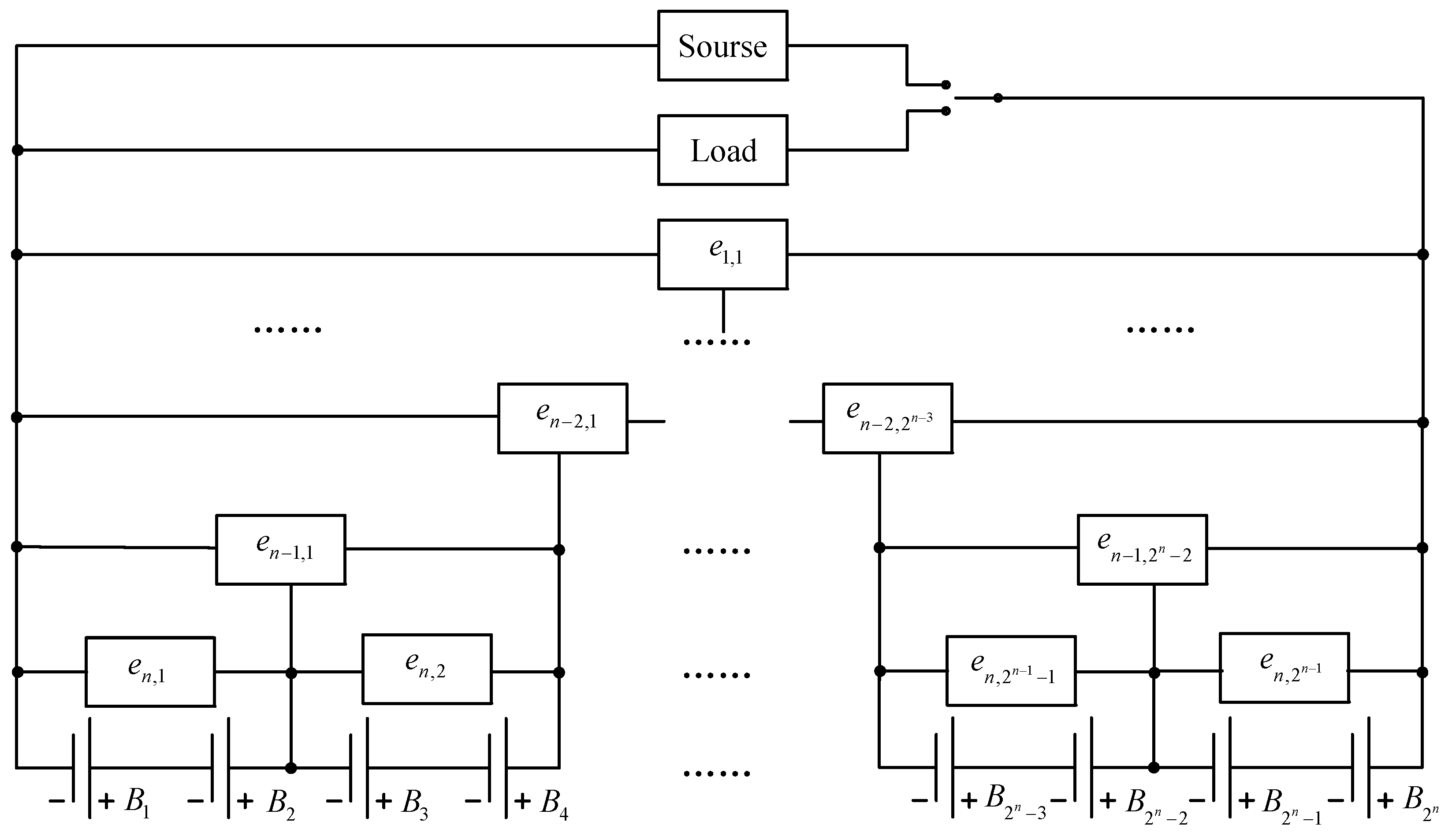
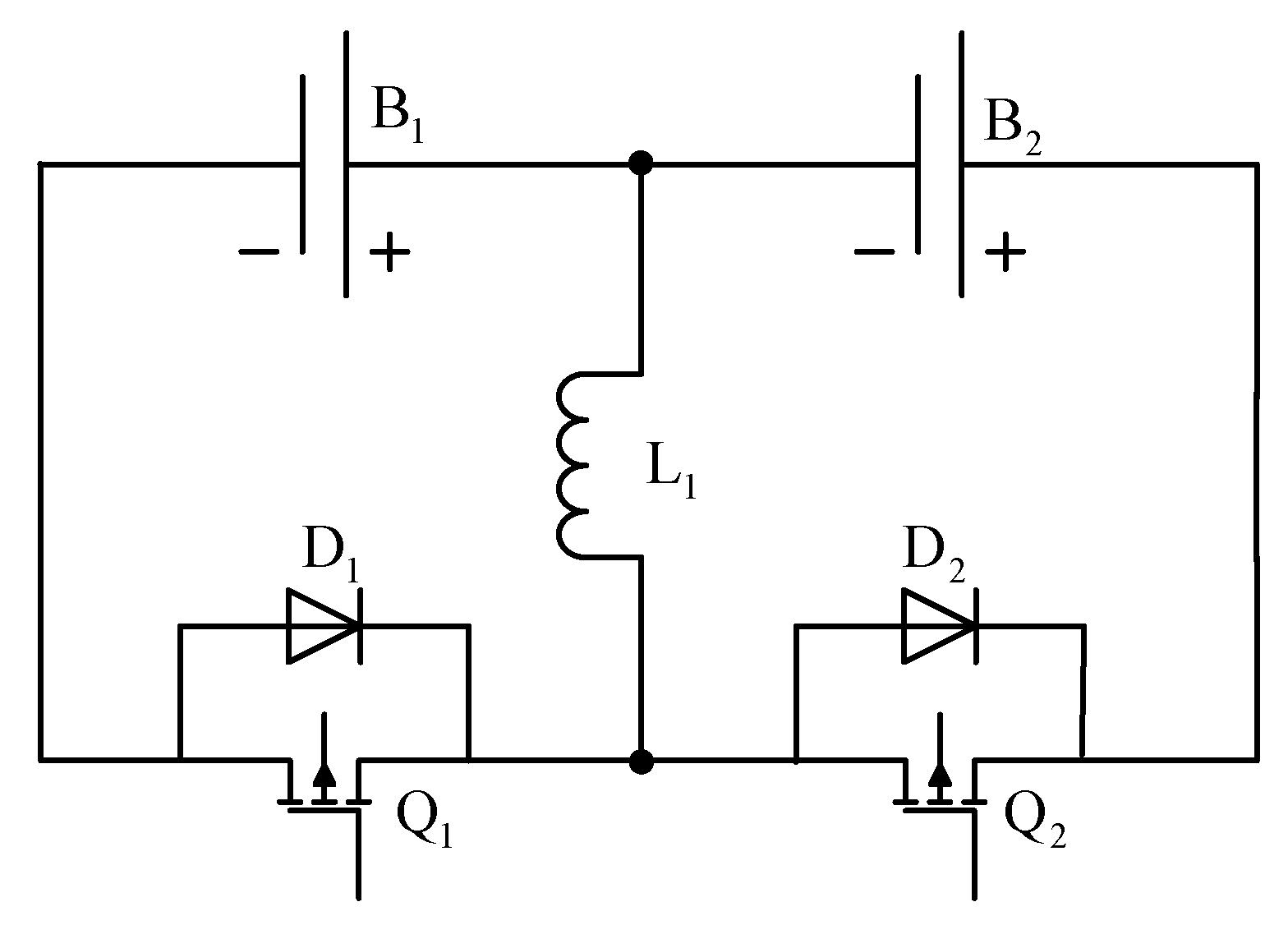
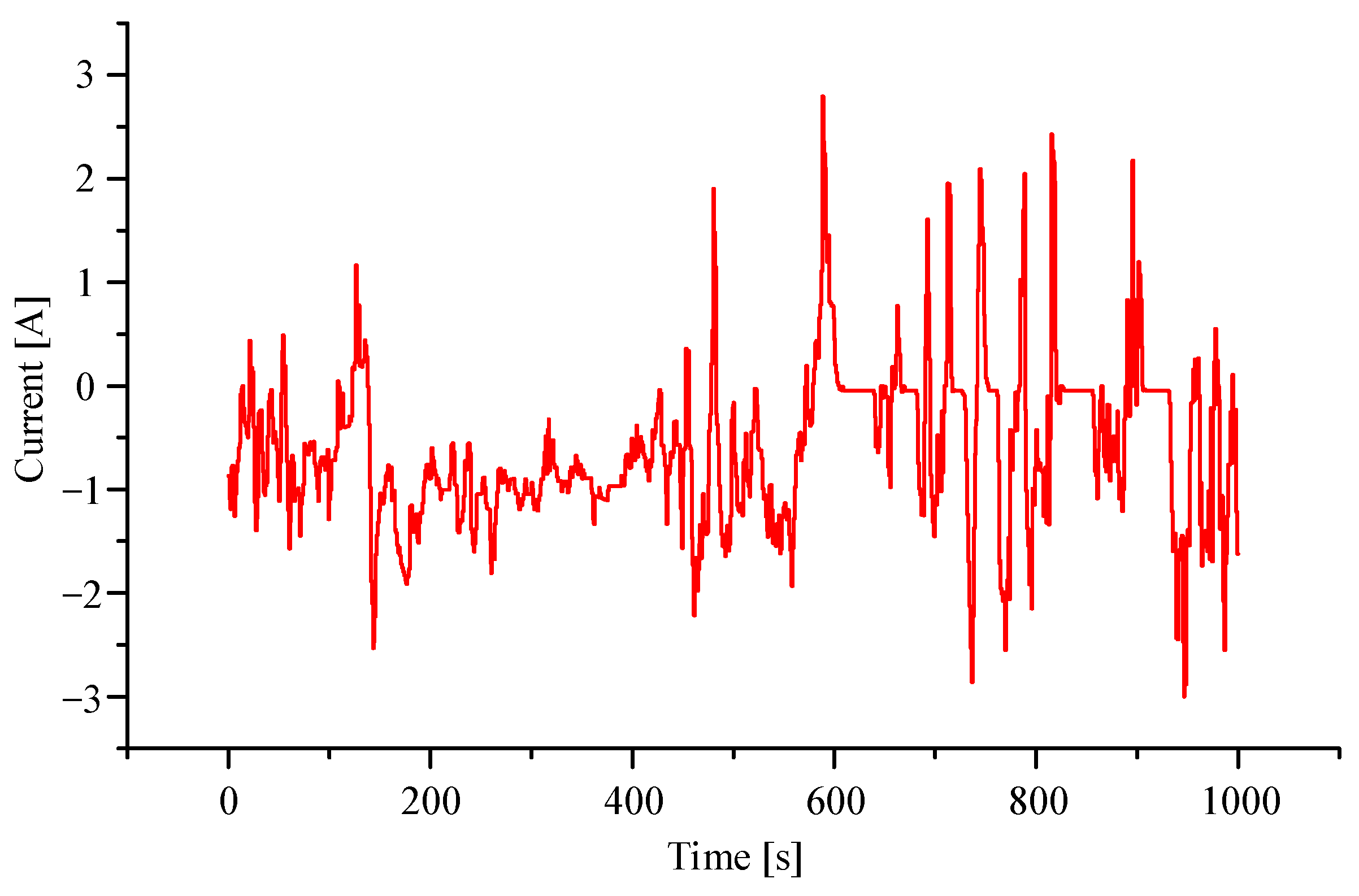
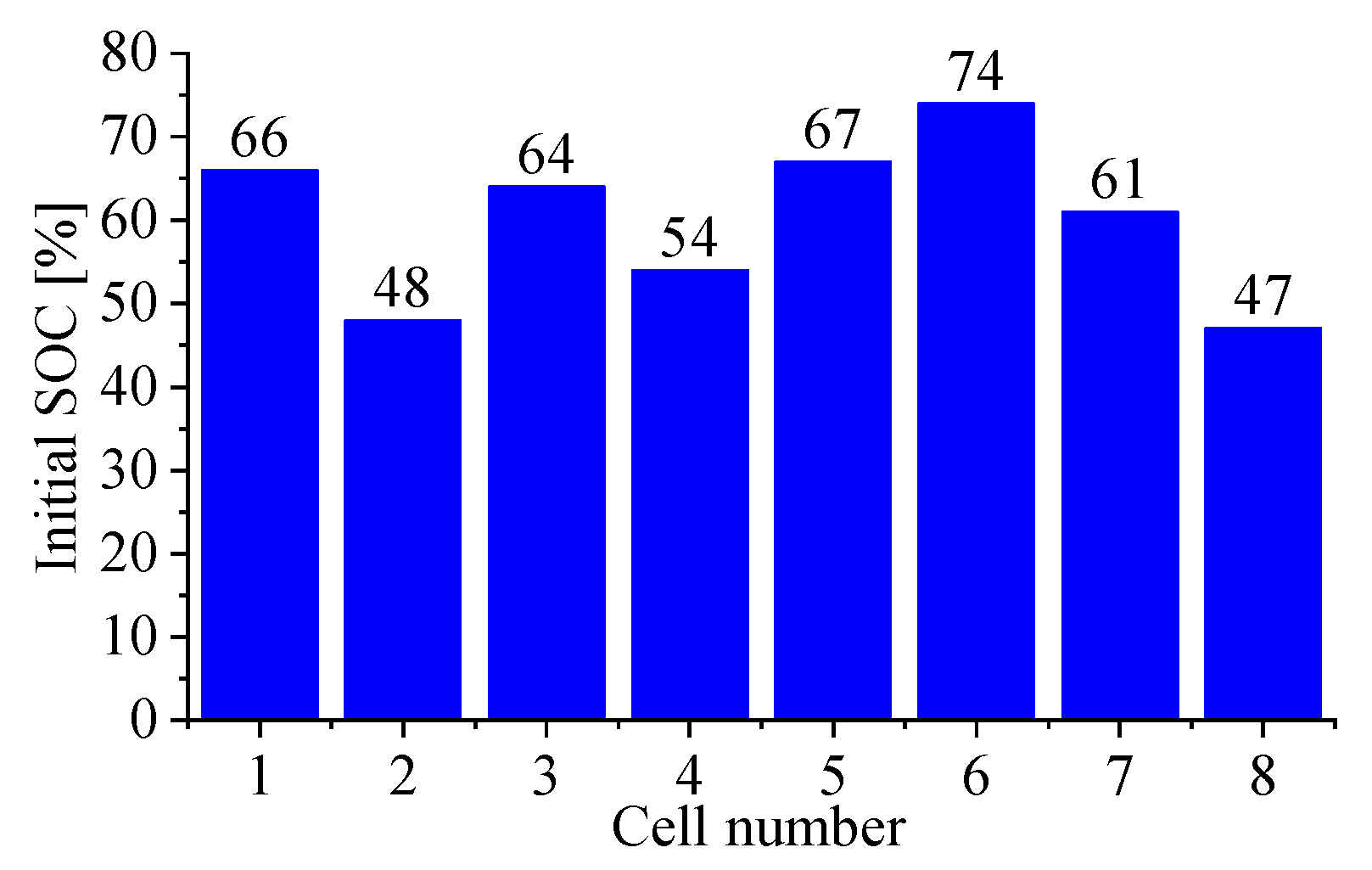
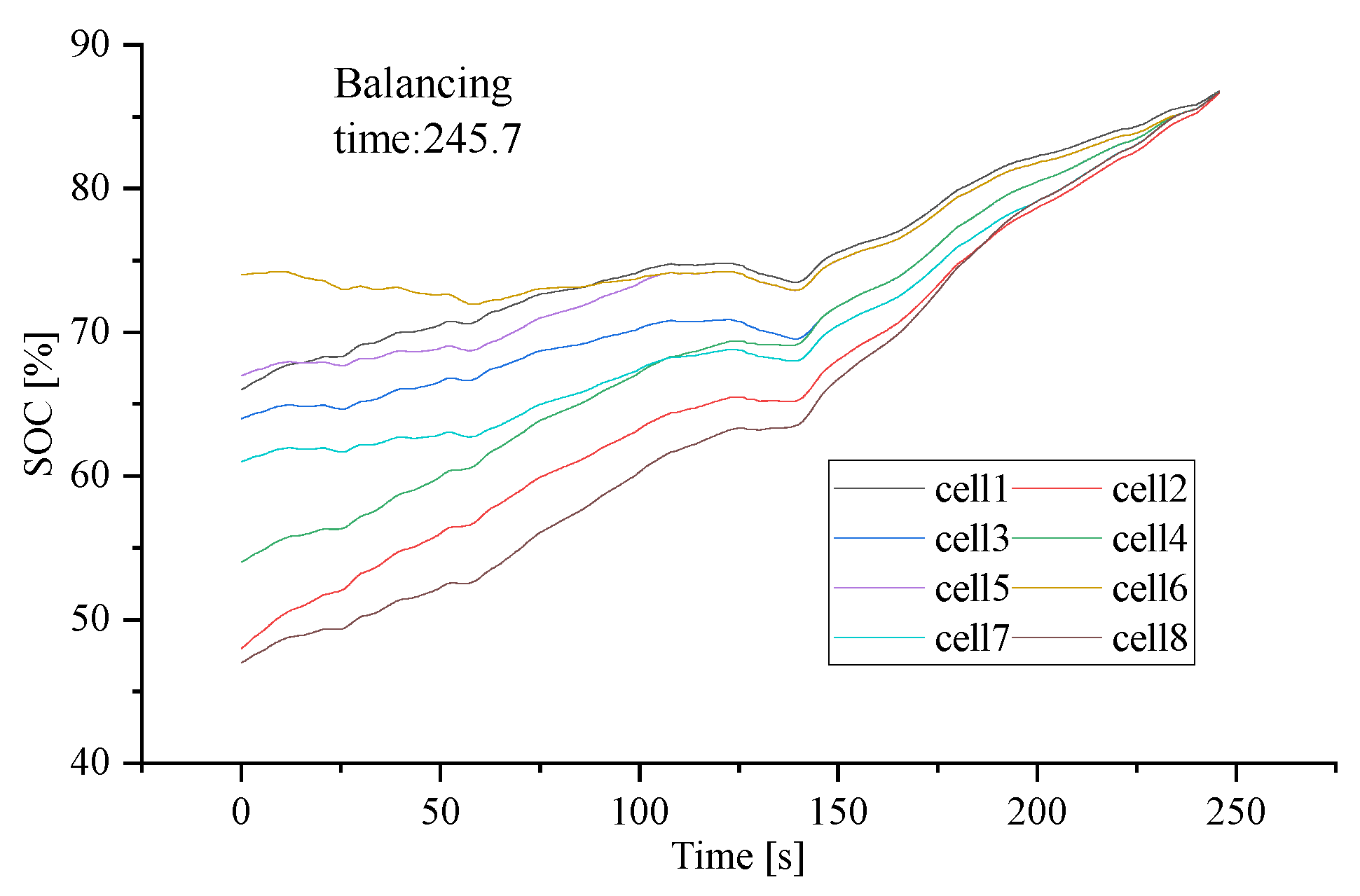
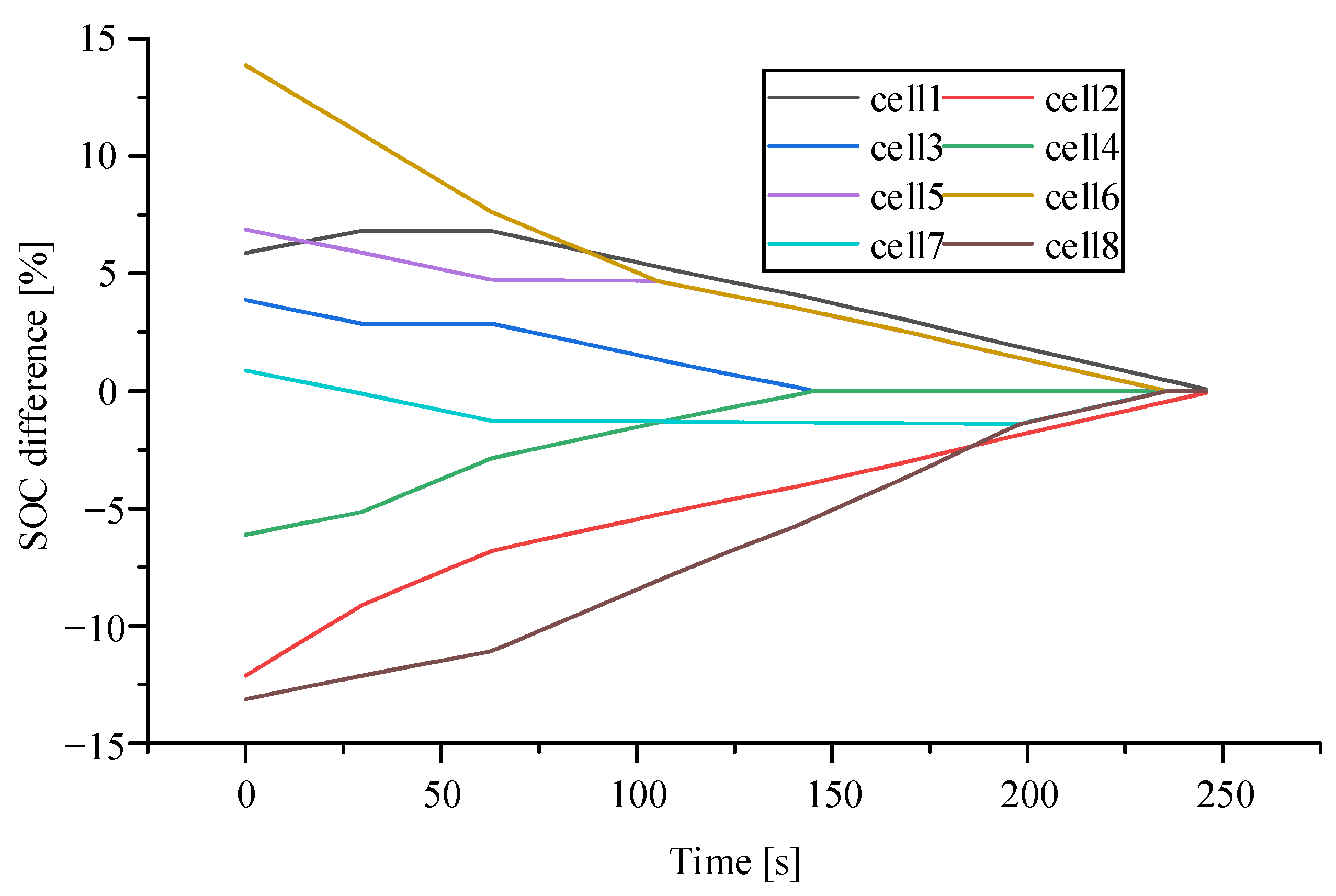
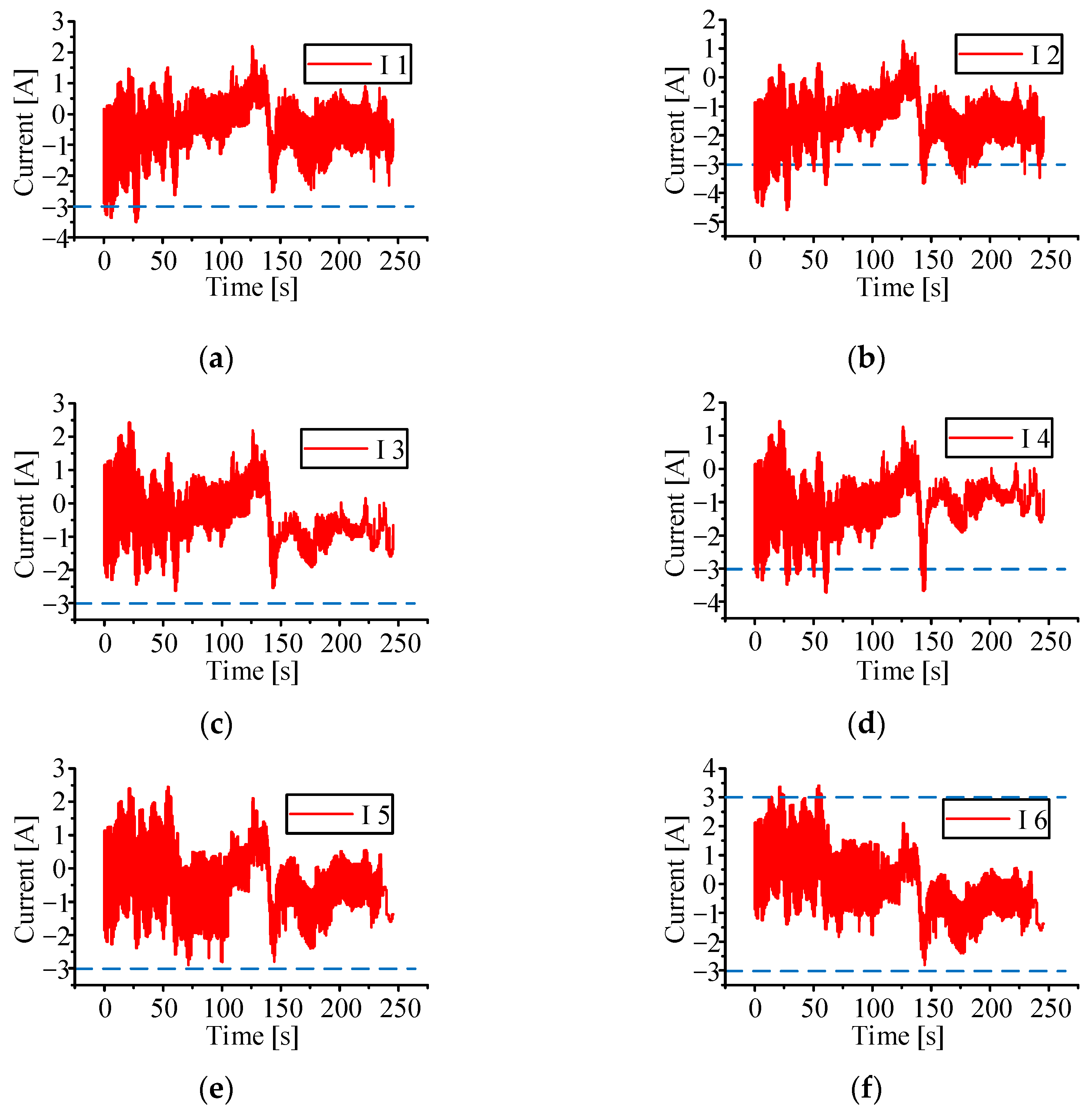
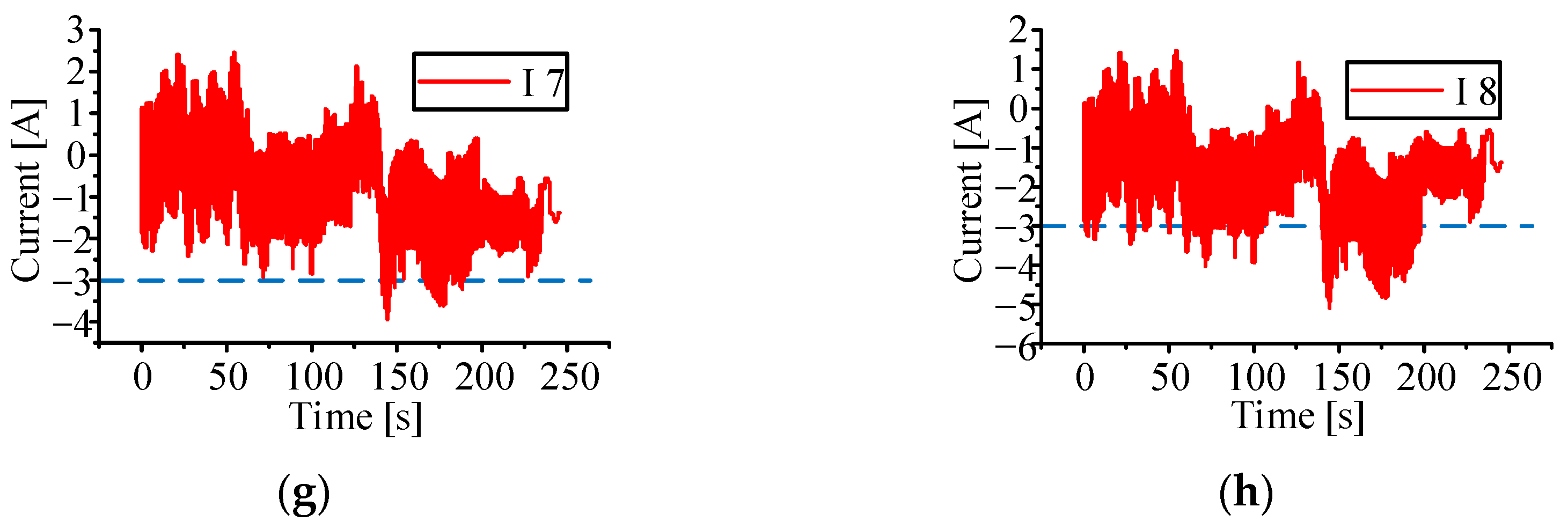

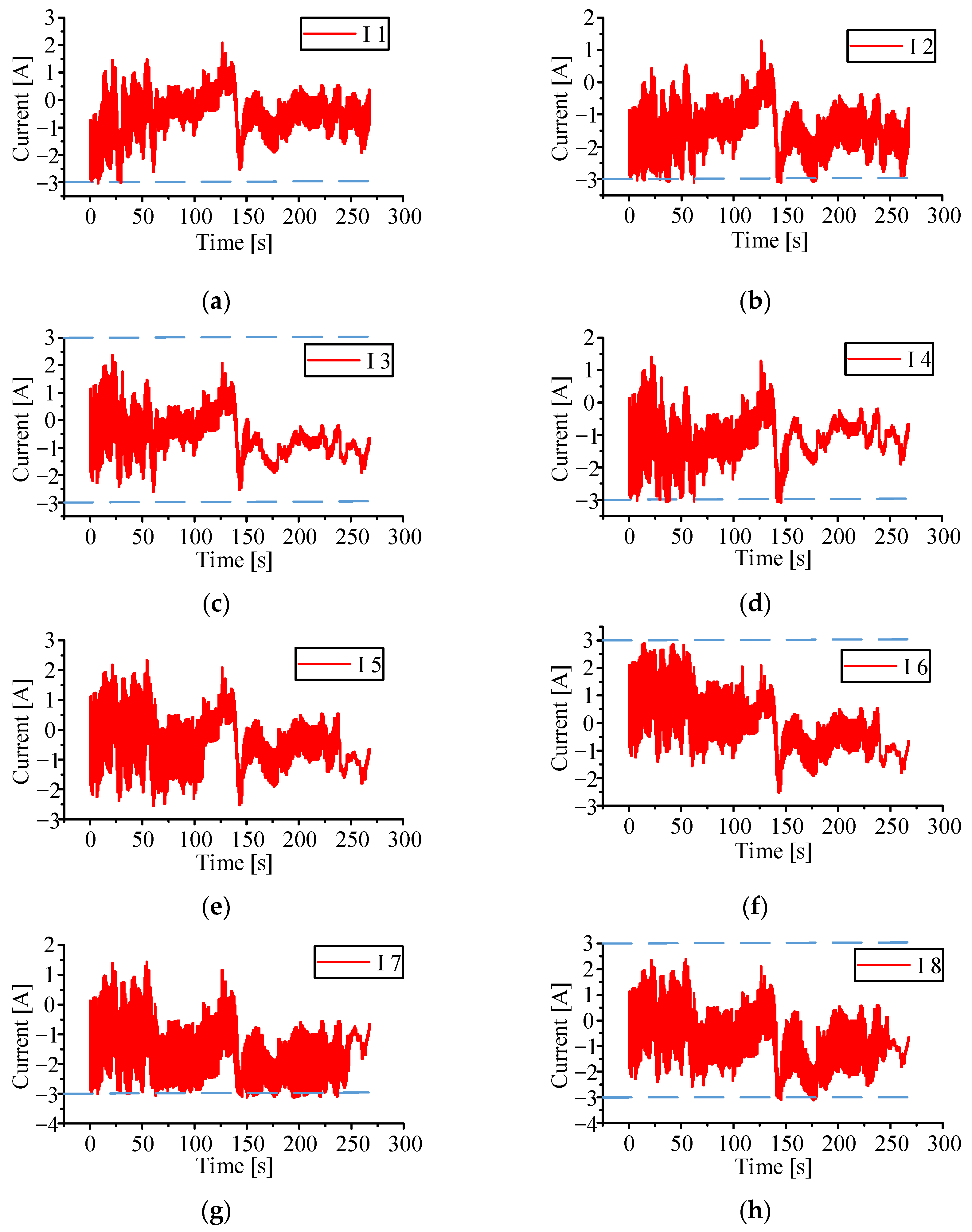
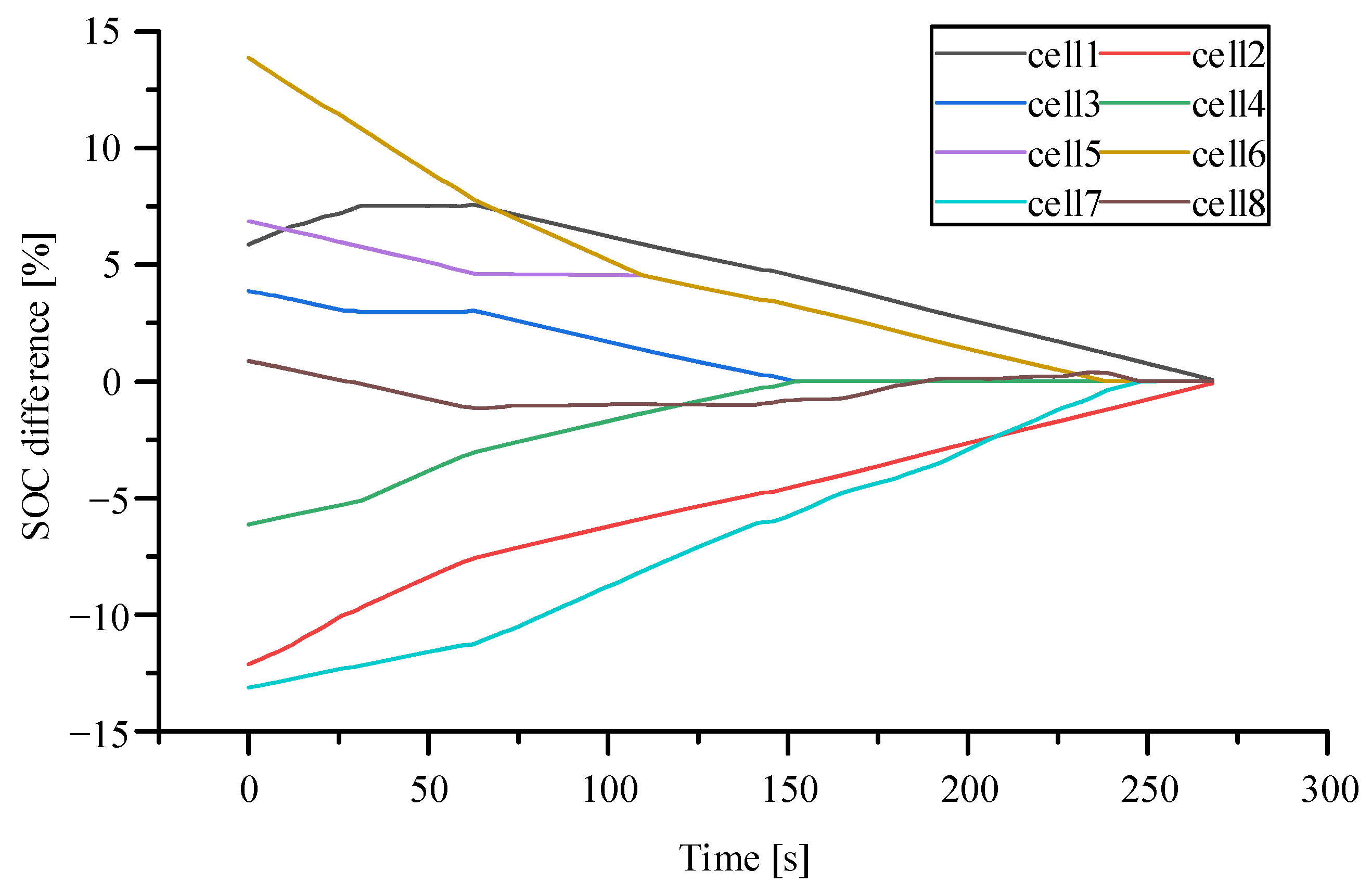
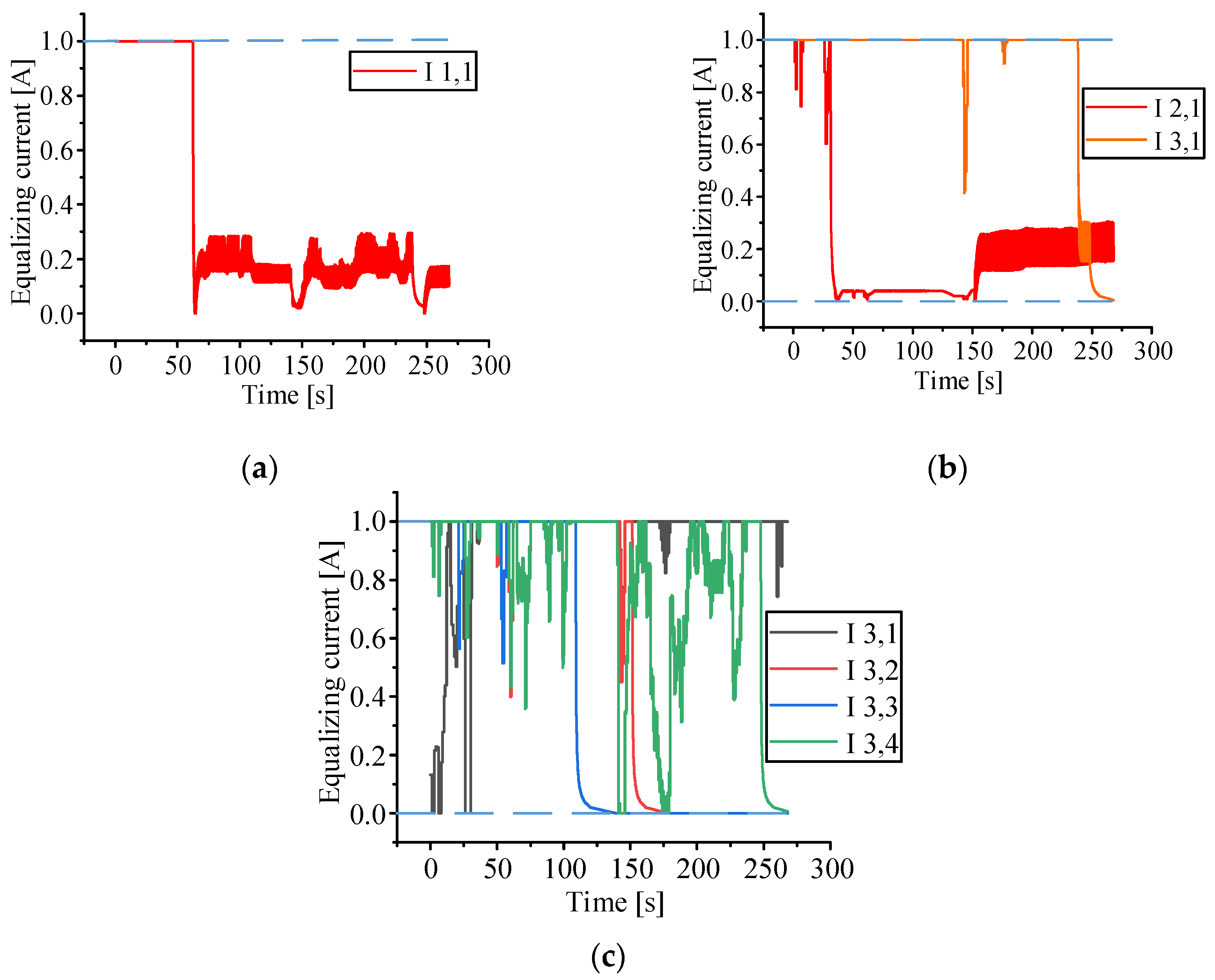
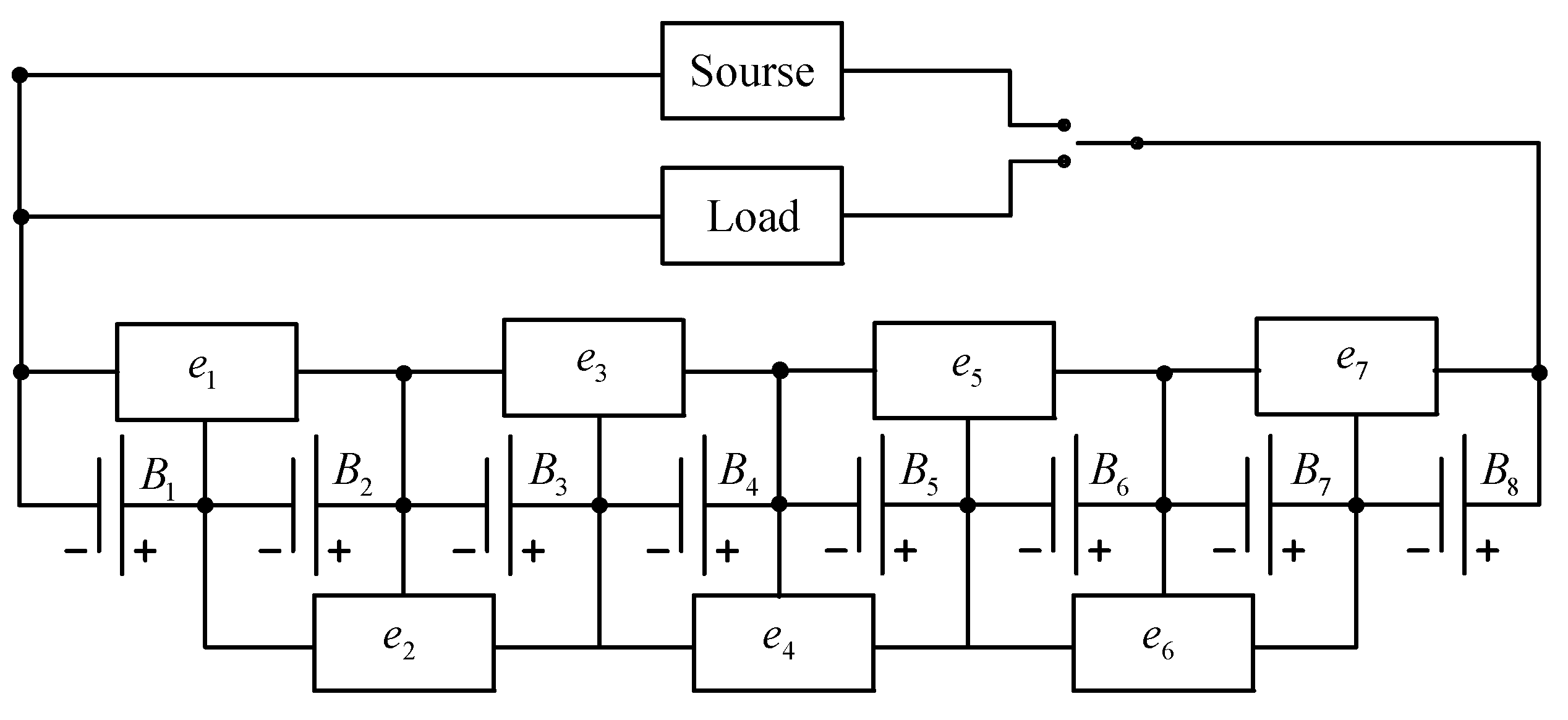



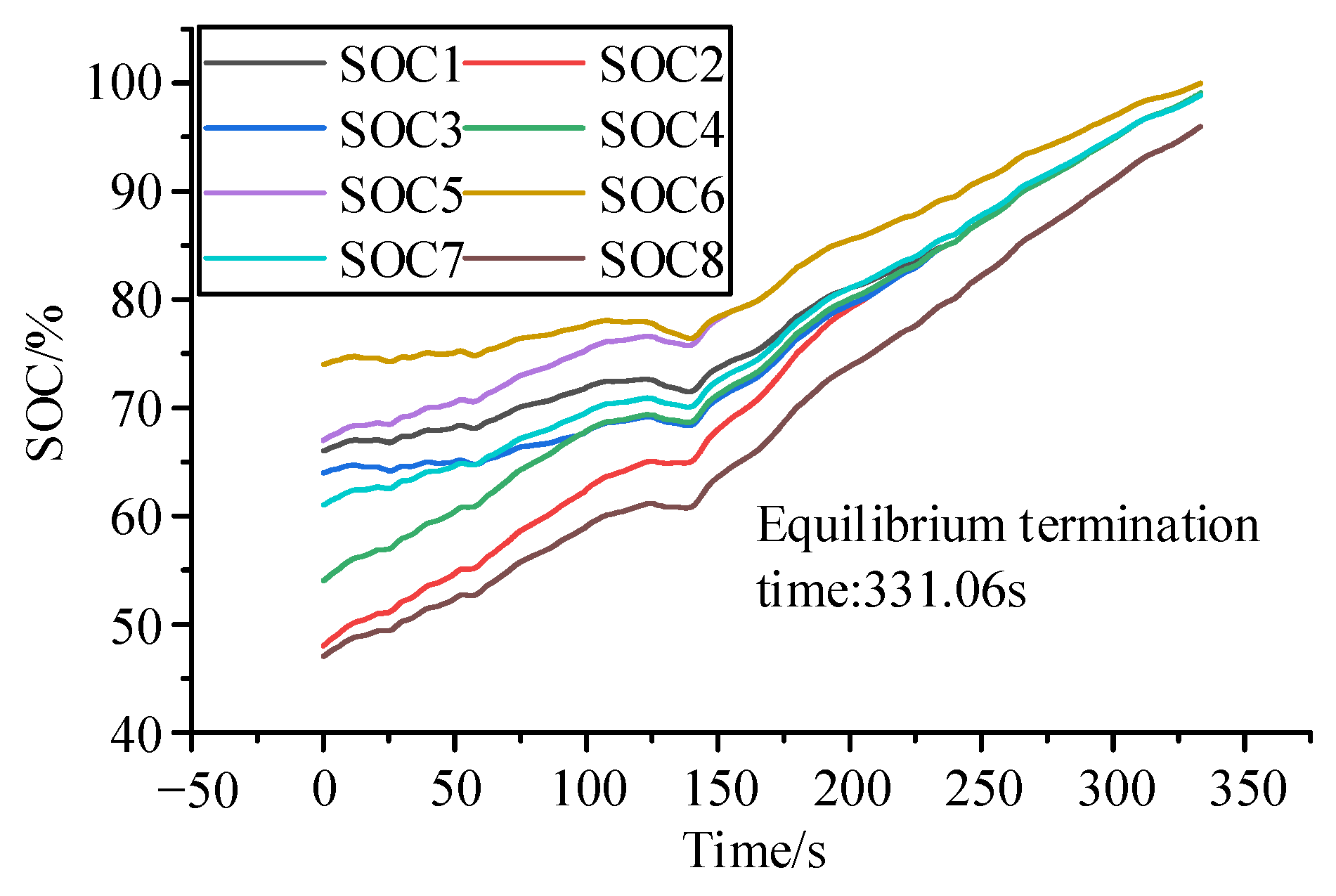
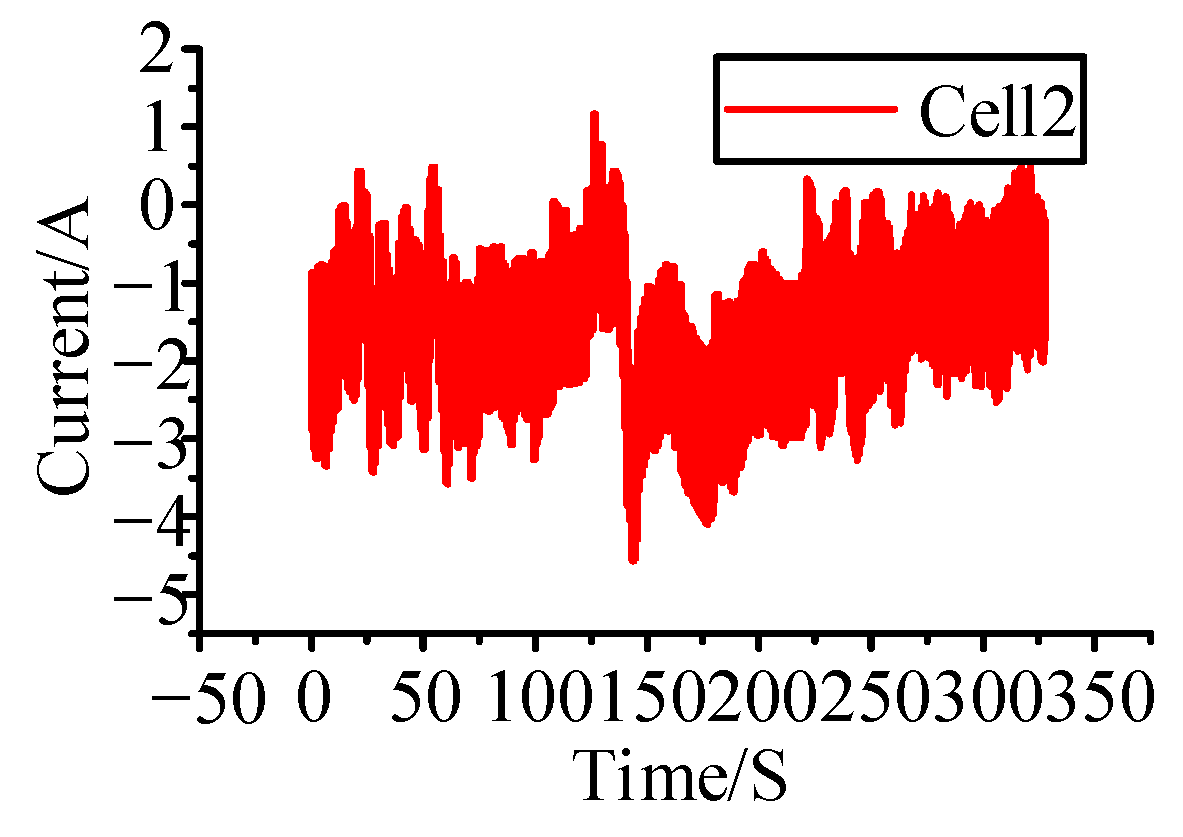

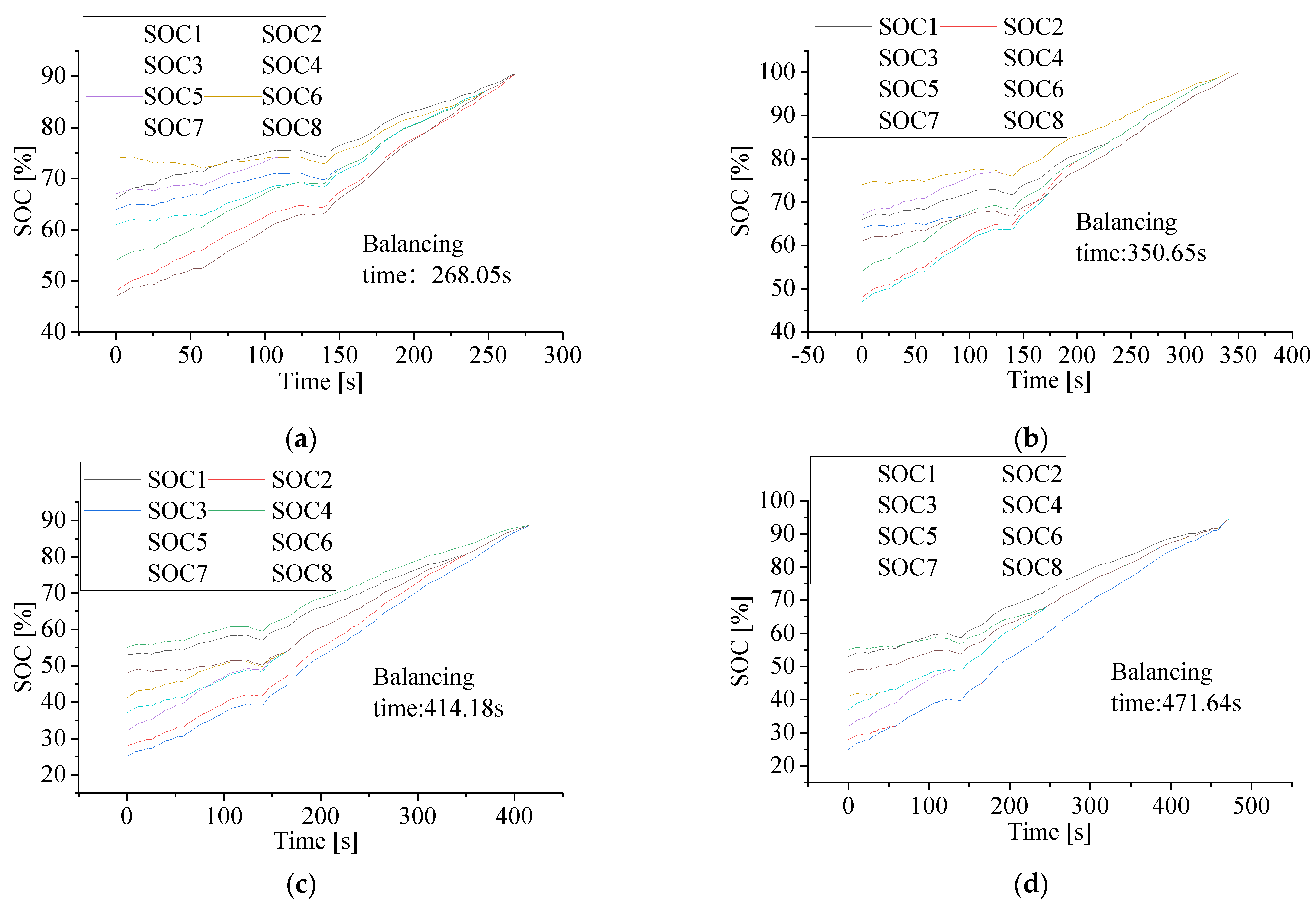
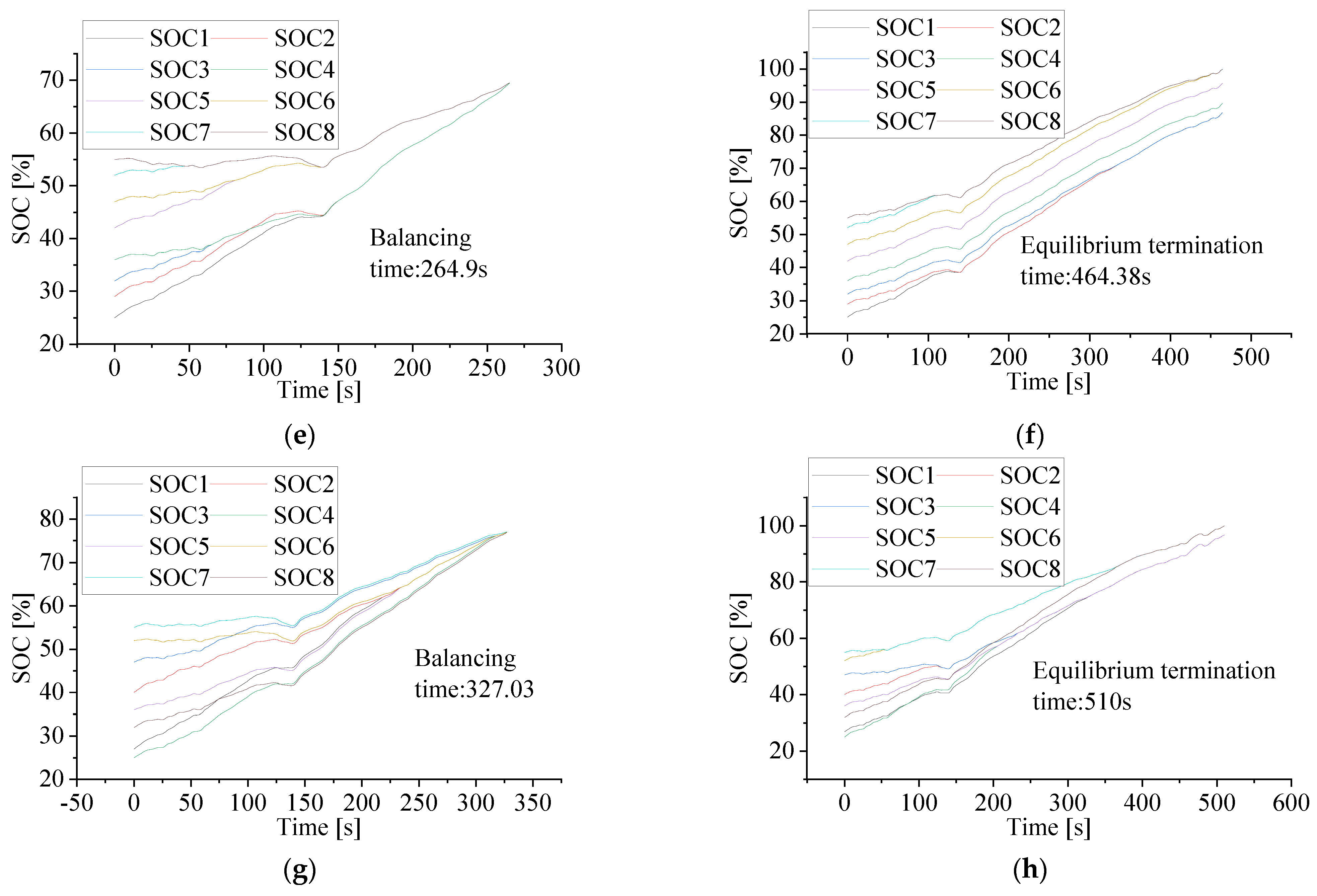
| Equalization Circuit | Cost | Equilibrium Speed | Equilibrium Current |
|---|---|---|---|
| Single inductor | Low | Low | Low |
| Adjacent inductance equalization [21] | Medium/High | Medium | Medium/High |
| Multi-layer inductor [22] | Medium/High | High | High |
| Multi-winding transformer [23] | High | Medium | Medium |
| Cuk converter [24] | Medium/High | Medium | Medium/High |
| Single SC [25] | Low | Low | Low |
| Modularized SC [26,27] | Medium/High | High | High |
| Equalization Strategy | Equalization Circuit | Equilibrium Speed | Current Exceeds Limit | Implementation Difficulty |
|---|---|---|---|---|
| Minimum energy loss [28] | Multi-layer inductor | Low/Medium | No | Difficult |
| Two-level equalization strategy [29] | Two-layer equalization circuit | Medium | Yes | Medium |
| Optimal path strategy [30] | Two-layer equalization circuit | Low | Yes | Difficult |
| Multi-mode uniform strategy [31] | Multi-switch equalization circuit | Low/Medium | Yes | Difficult |
| SOC difference control strategy [32] | Adjacent inductance equalization | High | Yes | Simple |
| Fuzzy control strategy [35] | Adjacent inductance equalization | High | Yes | Medium |
| MPC [37] | Two-layer equalization circuit | Low/Medium | Yes | Difficult |
| This article strategy | Multi-layer inductor | High | No | Medium |
| Parameter | Description |
|---|---|
| Nominal voltage | 3.7 V |
| Capacity | 0.2 Ah |
| Internal resistance | 0.02 Ω |
| Component Name | Quantity | Inductance Value |
|---|---|---|
| First layer inductance | 1 | 1.6 H |
| Second layer inductance | 2 | 0.8 H |
| Third layer inductance | 4 | 0.4 H |
| MOSFET switch | 14 |
| Equalization Circuit | Equilibrium Strategy | Equilibrium Time | Maximum Current | Current Exceeds Limit |
|---|---|---|---|---|
| Multi-layer equalization circuit | No strategy | 245.7 s | 5.04 A | Yes |
| This article strategy | 268.5 s | 3.02 A | No | |
| Adjacent equalizer circuit | No strategy | 350.65 s | 4.93 A | Yes |
| Fuzzy control | Incomplete equalization | 4.72 A | Yes | |
| SOC difference | Incomplete equalization | 4.68 A | Yes |
Publisher’s Note: MDPI stays neutral with regard to jurisdictional claims in published maps and institutional affiliations. |
© 2022 by the authors. Licensee MDPI, Basel, Switzerland. This article is an open access article distributed under the terms and conditions of the Creative Commons Attribution (CC BY) license (https://creativecommons.org/licenses/by/4.0/).
Share and Cite
Wang, L.; Lu, X.; Li, H.; Li, X.; Shen, J.; Chen, C. Research on Equalization Strategy of Lithium Battery Pack Based on Multi-Layer Circuit. Appl. Sci. 2022, 12, 4893. https://doi.org/10.3390/app12104893
Wang L, Lu X, Li H, Li X, Shen J, Chen C. Research on Equalization Strategy of Lithium Battery Pack Based on Multi-Layer Circuit. Applied Sciences. 2022; 12(10):4893. https://doi.org/10.3390/app12104893
Chicago/Turabian StyleWang, Lijun, Xu Lu, Hao Li, Xiangyang Li, Jie Shen, and Changxin Chen. 2022. "Research on Equalization Strategy of Lithium Battery Pack Based on Multi-Layer Circuit" Applied Sciences 12, no. 10: 4893. https://doi.org/10.3390/app12104893
APA StyleWang, L., Lu, X., Li, H., Li, X., Shen, J., & Chen, C. (2022). Research on Equalization Strategy of Lithium Battery Pack Based on Multi-Layer Circuit. Applied Sciences, 12(10), 4893. https://doi.org/10.3390/app12104893






